Practice
Articles on the life and experience of working as an artist.
Today, 4:25 am
Remember, when you read those stories about how people made fun of some great artist or entrepreneur or author, but 20 years later, the artist was hailed as a genius, and their company redefined an industry, and their ideas changed everything, that that’s only how it looks from the outside.
From the inside, if that’s you, it looks like having a crazy idea, or pouring a piece of your soul into something incredibly weird, and then having everybody laugh at you, or ignore you, or tear you down. And that’s it. There’s no indication another chapter is ever coming.
From the inside it looks like rent checks that bounce, and groceries left behind at the checkout, and long, lonely nights wondering if you were wrong, or wrong to even try. For 20 years. From whatever your current age is now, until that number plus 20. Maybe.
It’s a long game. And finding meaning in the destination is hard, and will make you question your sanity.
You have to find meaning in the work. In the day to day practice and grind. Not in the approval of others, but in your own satisfaction and need to create. If not there, then in the hope that the others exist, the ones who will understand, and this is how you find them. By being louder. By being brighter.
That’s how you make it through.
Waystations
As an artist, if you’re doing well, both as a creative and as a human being, you will often look back at your old work and be absolutely mortified by it. That’s OK though, it should embarrass you on some level. Even if your technique doesn’t seem rough, and your mistakes obvious, it’s going to feel too raw, or express embarrassing ideas, or show sides of yourself that you’d rather were still hidden away.
Some people are able to expose their deepest desires and have no regrets, others struggle to be honest about what they want for lunch, and are mortifed if someone else knows they really want a BLT. For our purposes, it doesn’t matter that much where your boundaries are, as long as you’re living right on the edge of where the land ends, and letting a foot hang over into the dark water below.
It’s that boundary crossing, that sense of transgression that gives any creative act its power. That place where solid ground and unformed darkness meet is the only place where real things can be conceived. Where the edge is will move around for you, with time. The only important thing is that you’re working for yourself, where the edge is for you right now, trying to figure that place out.
You might not be in the same place a few years from now, and looking back on yourself there might be embarrassing, but that’s fine. That work is not for you anymore. It’s not really yours now. Like a map left behind on a journey, it belongs to people who are stuck in that place today, where you once sat, even if you aren’t there anymore. -j
Into the Kitchen

Illustration by Maurice Sendak, 1970
When I was a kid, and obsessed with reading, no-one was as magical as Maurice Sendak, with Where the Wild Things Are and In The Night Kitchen. I read other books more often, but reserved a sort of reverence for Sendak’s surreal stories of a childhood full of secret doors and ways into hidden worlds. The others were great stories, but Sendak was mythology. There were whispers there of deeper truths, mysteries and better worlds to be found.
In the Night Kitchen is the story of Mickey, who one night falls out of his clothes and into the night kitchen where giant bakers are making batter for the Morning Cake. For me, as a little kid, it was like getting a glimpse into the secret workings of the universe. The kitchen was a mysterious, loud place, that only adults had control over, but also where all the food came from. Recognizing that most children would see it that way, in a way no adult would, is Sendak’s genius of course, and what gives his stories their mythic weight.
What you make and what you do
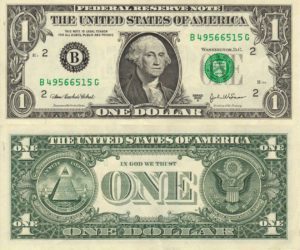 A side effect of making art is that it produces rare objects that are hard to copy well, much like a dollar bill. Thus, they make excellent currency. Like any currency though, they’re only valuable once their rarity and authenticity can be guaranteed. Rarity means you have to be able to guarantee the quantity available won’t change quickly and flood the market, so preferably, the artist should be dead, to make the best currency.
A side effect of making art is that it produces rare objects that are hard to copy well, much like a dollar bill. Thus, they make excellent currency. Like any currency though, they’re only valuable once their rarity and authenticity can be guaranteed. Rarity means you have to be able to guarantee the quantity available won’t change quickly and flood the market, so preferably, the artist should be dead, to make the best currency.
Even authenticity is mostly random. An authentic dollar is more valuable than an authentic monopoly dollar, even though they’re both the same thing, because it’s harder to reproduce, but mostly because we agree it is. A Renaissance painting of Zeus is worth more than a painting of Zeus from 1997, likewise, because we agree it is. There’s no real reason beyond that though. We like the story behind the older one, but that’s about it. Stories aren’t valuable. You can’t do much with them, but we like them, a lot. So we agree that they’re worth a lot.
The Blank Slate
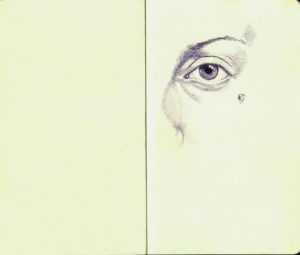 I’m shopping for a new tablet to use with digital media today.
I’m shopping for a new tablet to use with digital media today.
Technology has never made as many things as easy as they are right now. While it’s a popular idea to say that smart phones create social disconnection, or that porn creates sexual dysfunction, it’s a silly idea too. Disconnection and furtive sex have always been part of being human. The behaviors aren’t new at all, but the magnitude is. You could bury your face in a book at the dinner table 100 years ago, or secretly look at erotic etchings while your husband was away in town, but the book would eventually end, and there were only two etchings, and neither one was very good. Neither one was a crafted, never-ending flow of sex promising to show you (but never let you touch or possess) everything you want. Once, we chewed coca leaves for a little boost of energy. Now we’ve got pure chemical cocaine, which is tougher to turn away from, or get self-awareness on.
Still, as much as that disturbs me at times, I see it as each person’s individual choice to keep using or not… sort of.
Into the Wild
A friend once asked me to talk to his teenage son who wanted to lead a creative life, not go to college or get a job, but instead, go on an adventure, not to stay safe, but to really experience the hardness of life, and experience amazing, dangerous things.
The son told me his favorite book was Into The Wild, and that he wanted to emulate Chris McCandless. “That’s the book where the guy risks his life and goes into the Alaskan wilderness and lives off the land, right?” I asked.
“Yeah,” he said. “I want to do that. I want to do exactly that.”
“And then he starves to death in an abandoned bus.” I said.
“Yeah,” he said, “but I just want to do the first part.” -j
Love your work
 People will tell you they love your work, if you put it out into the world. This made me feel great about myself, until I noticed that people will say they love anyone else’s work too. Even really terrible, unlovable work. It’s easy to find people who will tell you yoru work is great. It’s much harder to find people who love your work enough to actually purchase it, or support you in making it, which I think, really, is what we’re hoping they’re saying when they say they love what we do- that they’ll help.
People will tell you they love your work, if you put it out into the world. This made me feel great about myself, until I noticed that people will say they love anyone else’s work too. Even really terrible, unlovable work. It’s easy to find people who will tell you yoru work is great. It’s much harder to find people who love your work enough to actually purchase it, or support you in making it, which I think, really, is what we’re hoping they’re saying when they say they love what we do- that they’ll help.
If they felt love, they’d help, but chances are, they don’t love your work, even if they say they do. It’s more complicated than that.
Being any kind of creative is a fairly pitiless path to choose for yourself. You will probably not be taken care of emotionally, save for by a very precious few, and probably not rewarded financially for a long time. You should know this going in.
The Odds
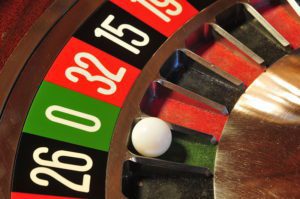
Photographer: Ralf Roletshek
used under creative commons
In the business of being an artist, let’s say that creative success is just an odds game, like playing roulette, and you need to spin a red 9 to win. Let’s say that, because it’s true.
There are two differences:
1. The roulette wheel will change size depending how good you are. If you are terrible at your craft, the wheel will have thousands of numbers on it. You might still hit nine, but probably not. If you’re really good, it just has one through ten. If you’re amazing, it’s just red or black.
2. You don’t actually have to pay anything when you lose your bet, but you still collect when you win. This is amazing. Sure, you will have wasted the time it took to play, and people might look at you funny when you lose, but there is no actual loss- just an emotional one. You can choose to toughen up and play again.
Continue reading
How To Make It As An Artist
 Here’s what you do:
Here’s what you do:
You just make something
You do it now.
It might be good. It might speak to people, make them think. It might touch them in ways they didn’t know they could be touched. It might take a little piece of you and show it to someone else, who will realize for the first time that they aren’t alone.
It might make people think and feel more than they wanted to feel. You might leave them awake at night, grinding their teeth, haunted, and cursing you. When the sound of their grinding teeth drifts back to you, through your open window on cool autumn nights and fills up your dreams with the beautiful, terrible realizations you released into the world, then you will know that you have made something great.
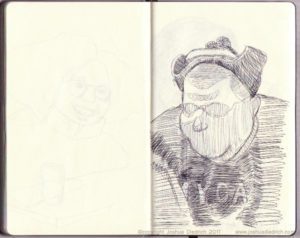 Remember, when you read those stories about how people made fun of some great artist or entrepreneur or author, but 20 years later, the artist was hailed as a genius, and their company redefined an industry, and their ideas changed everything, that that’s only how it looks from the outside.
Remember, when you read those stories about how people made fun of some great artist or entrepreneur or author, but 20 years later, the artist was hailed as a genius, and their company redefined an industry, and their ideas changed everything, that that’s only how it looks from the outside.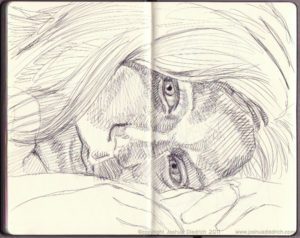 As an artist, if you’re doing well, both as a creative and as a human being, you will often look back at your old work and be absolutely mortified by it. That’s OK though, it should embarrass you on some level. Even if your technique doesn’t seem rough, and your mistakes obvious, it’s going to feel too raw, or express embarrassing ideas, or show sides of yourself that you’d rather were still hidden away.
As an artist, if you’re doing well, both as a creative and as a human being, you will often look back at your old work and be absolutely mortified by it. That’s OK though, it should embarrass you on some level. Even if your technique doesn’t seem rough, and your mistakes obvious, it’s going to feel too raw, or express embarrassing ideas, or show sides of yourself that you’d rather were still hidden away.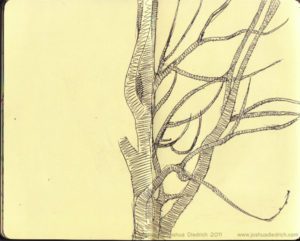 A friend once asked me to talk to his teenage son who wanted to lead a creative life, not go to college or get a job, but instead, go on an adventure, not to stay safe, but to really experience the hardness of life, and experience amazing, dangerous things.
A friend once asked me to talk to his teenage son who wanted to lead a creative life, not go to college or get a job, but instead, go on an adventure, not to stay safe, but to really experience the hardness of life, and experience amazing, dangerous things.